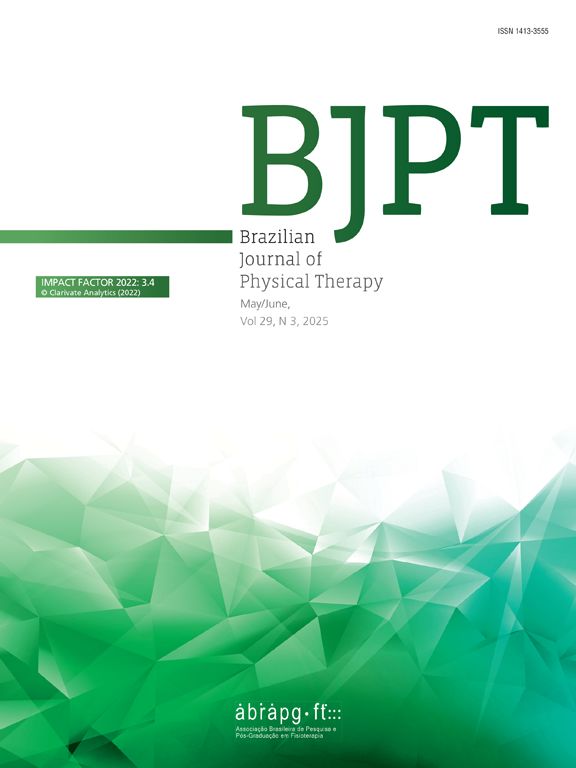
1st STUDENT SCIENTIFIC CONFERENCE OF THE BRAZILIAN ASSOCIATION FOR RESEARCH AND POSTGRADUATE IN PHYSIOTHERAPY (ABRAPG-FT)
More info“Text neck” is defined by the cervical flexion adopted when using mobile devices. The possible causal relationship between this posture and neck pain is still widely discussed.
ObjectivesThe aim of this study was to investigate this association.
MethodsIt is a longitudinal observational study. The sample consisted of 396 volunteers without neck pain aged between 18 and 65 years. Sociodemographic, anthropometric, lifestyle (level of physical activity, smoking, sleep quality), psychosocial (anxiety, depression, social isolation) and smartphone use issues were assessed using a self-reported questionnaire. Text neck was assessed by measuring the cervical flexion angle of participants standing while typing text on their smartphones, using the cervical range of motion (CROM) device at baseline. Two questions were used to assess the point prevalence and frequency of neck pain one year after baseline: “Did you have neck pain today?” With the following answer options “yes” or “no” and “How often do you have neck pain?”, the answer options were “very often”, “often”, “from time to time”, “rarely” and “never”.
ResultsOf the total, 84% (n=335) of participants completed the one-year follow-up. Neck pain was reported by 10% (n=40) of the sample. The average cervical flexion angle of the standing participants using the smartphone was 34º (SD=12). Multiple logistic regression analysis showed that participants' neck flexion angle while standing using a smartphone was not associated with neck pain (OR = 1.01; 95% CI: 0.98-1.04; p=0.64) or frequency of neck pain (OR = 1.01; 95% CI: 0.99-1.03; p=0.44) one year after baseline. Of the potential confounders, sleep quality was associated with neck pain (OR = 1.76; 95% CI: 1.18–2.62; p=0.006) and frequency of neck pain (OR = 1.53, CI 95 %: 1.19–1.96; p=0.001). When compared to active participants, insufficiently active participants increased the chances of neck pain (OR = 2.42; 95%CI: 1.04–5.63; p=0.04).
Conclusion“Text neck” was not associated with neck pain or frequency of neck pain in adults.
ImplicationsThese results challenge the belief that poor neck posture while using smartphones leads to neck pain and may help mitigate the impact of negative information on the cervical spine.
Conflict of interest: The authors declare no conflict of interest.
Acknowledgment: Not applicable.
Ethics committee approval: CEP UNISUAM (3.030.275).





